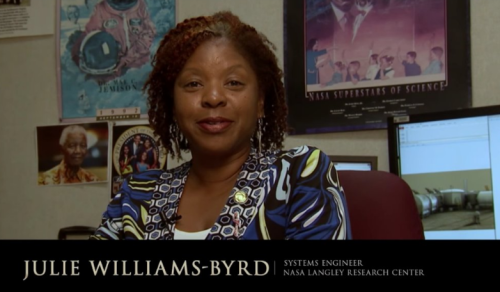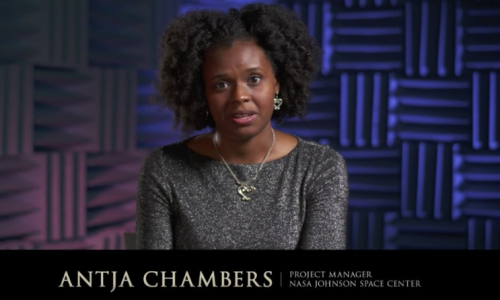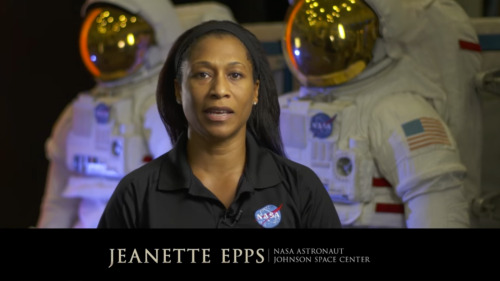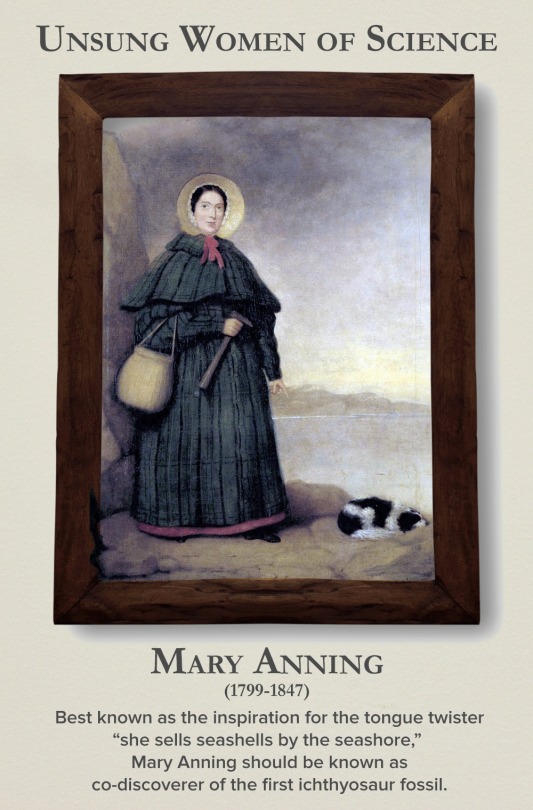Are Colour-changing Octopuses Really Colourblind?
Are colour-changing octopuses really colourblind?
Cephalopods, including octopuses and squid, have some of the most incredible colour-changing abilities in nature.
They can almost instantly blend in with their surroundings to evade predators or lay in wait, and put on colourful displays to attract mates or dazzle potential prey.
This is impressive enough on its own, but becomes even more amazing when you discover these creatures are in fact colourblind – they only have one type of light receptor in their eyes, meaning they can only see in black and white.
So how do they know what colours to change to at all?
This has puzzled biologists for decades but a father/son team of scientists from the University of California, Berkeley, and Harvard University think the unusual shape of their pupils holds the key, and they can see colour after all.
Cephalopods have wide U-shaped or dumbbell-shaped pupils, which allow light into the lens from many directions.

When light enters the pupils in human eyes it gets focused on one spot, cutting down on blur from the light being split into its constituent colours.
The scientists believe cephalopod eyes work the opposite way – the wide pupils split the light up and then individual colours can be focused on the retina by changing the depth of the eyeball and moving the pupil around.
The price for this is blurry vision, but it does mean they could make out colours in a unique way to any other animals.
Processing colour this way is more computationally intensive than other types of colour vision and likely requires a lot of brainpower, which might explain in part why cephalopods are the most intelligent invertebrates on Earth.

Read the paper
Images: Roy Caldwell, Klaus Stiefel, Alexander Stubbs
More Posts from Contradictiontonature and Others





The film “Hidden Figures,” based on the book by Margot Lee Shetterly, focuses on the stories of Katherine Johnson (left, after receiving the Medal of Freedom in 2015), Mary Jackson and Dorothy Vaughan, African-American women who were essential to the success of early spaceflight. Today, NASA embraces their legacy and strives to include everyone who wants to participate in its ongoing exploration. “Progress is driven by questioning our assumptions and cultural assumptions,” NASA Administrator Charles Bolden says in a new video. “Embracing diversity and inclusion is how we as a nation will take the next giant leap in exploration.“
- Source
Let’s learn about today’s black heroes we all can look up to!

Collective memory in bacteria
Individual bacterial cells have short memories. But groups of bacteria can develop a collective memory that can increase their tolerance to stress. This has been demonstrated experimentally for the first time in a study by Eawag and ETH Zurich scientists published in PNAS.
Roland Mathis, Martin Ackermann. Response of single bacterial cells to stress gives rise to complex history dependence at the population level. PNAS, March 7, 2016 DOI: 10.1073/pnas.1511509113
Experimental set-up with the bacterium Caulobacter crescentus in microfluidic chips: each chip comprises eight channels, with a bacterial population growing in each channel. The bacteria are attached to the glass surface by an adhesive stalk. When the bacterial cells divide, one of the two daughter cells remains in the channel, while the other is washed out. Using time-lapse microscopy, bacterial cell-division cycles and survival probabilities can thus be reconstructed. Credit: Stephanie Stutz

It was one of the very first motion pictures ever made: a galloping mare filmed in 1878 by the British photographer Eadweard Muybridge, who was trying to learn whether horses in motion ever become truly airborne.
More than a century later, that clip has rejoined the cutting edge. It is now the first movie ever to be encoded in the DNA of a living cell, where it can be retrieved at will and multiplied indefinitely as the host divides and grows.
The advance, reported on Wednesday in the journal Nature by researchers at Harvard Medical School, is the latest and perhaps most astonishing example of the genome’s potential as a vast storage device.
Continue Reading.



Why scientists are rooting for mushrooms
Mushrooms are the organisms that keep on giving. They grow and feed the soil by breaking down organic matter. For centuries, they’ve also been a staple in our diet.
Recently, people have started taking a closer look at mushrooms, and more specifically, mycelium — the hidden root of mushrooms — as an engineering material to produce goods like surfboards, packaging materials, furniture and even architecture.

As far as natural materials go, there’s never been anything as versatile and cost-effective as fungi, says Sonia Travaglini, a doctoral candidate in mechanical engineering at UC Berkeley, who is collaborating with artist and mycologist Philip Ross to unlock the seemingly infinite potential of fungi.
Mycelium can grow into any shape or size (the largest in the world blankets an entire forest in Oregon). They can be engineered to be as hard and strong as wood or brick, as soft and squishy as foam, or even smooth and flexible, like fabric.
Unlike other natural materials, mushrooms can rely on their recycling properties to break down organic matter so you can grow a lot of it very quickly and cheaply just by feeding it biodegradable waste. In as little as two weeks, you can cultivate a hunk of mushroom that’s brick-sized.
That mycelium actually takes in waste and carbon dioxide as it grows (one species of fungi even eats plastic trash) instead of expelling byproducts makes it far superior to other forms of production.
Plus, when you’re done with mushroom, you can compost it or break up the material to grow more mycelium from it.
“And, unlike forming synthetic materials, which have to be made while very hot or under pressure, all of which takes a lot of energy to create those conditions, mycology materials grow from mushrooms which grow in our normal habitat, so it’s much less energy-intensive,” said Travaglini.
In the lab, Travaglini and other researchers crush, compress, stretch, pull and bend mycelium to test the amount of force the material can tolerate.


They found that mycelium is incredibly strong and can withstand a lot of compression and tension.
Most materials are only strong from one direction. But mycology materials are tough from all directions and can absorb a lot force without breaking. So it can withstand as much weight as a brick, but won’t shatter when you drop it or when it experiences a hard impact, said Travaglini.
As one of the newer organisms receiving an application in biomimetics, a field of science that looks to imitate nature’s instinctive designs to find sustainable solutions and innovation, we might be getting merely a glimpse of what fungi is capable of.
“Mycology is still a whole new field of research, we’re still finding more questions and still really don’t know where it’s going to go, which makes it really exciting,” said Travaglini.
Image sources: Vice UK/Mazda & Pearson Prentice Hall

(Image caption: A new technique called magnified analysis of proteome (MAP), developed at MIT, allows researchers to peer at molecules within cells or take a wider view of the long-range connections between neurons. Credit: Courtesy of the researchers)
Imaging the brain at multiple size scales
MIT researchers have developed a new technique for imaging brain tissue at multiple scales, allowing them to peer at molecules within cells or take a wider view of the long-range connections between neurons.
This technique, known as magnified analysis of proteome (MAP), should help scientists in their ongoing efforts to chart the connectivity and functions of neurons in the human brain, says Kwanghun Chung, the Samuel A. Goldblith Assistant Professor in the Departments of Chemical Engineering and Brain and Cognitive Sciences, and a member of MIT’s Institute for Medical Engineering and Science (IMES) and Picower Institute for Learning and Memory.
“We use a chemical process to make the whole brain size-adjustable, while preserving pretty much everything. We preserve the proteome (the collection of proteins found in a biological sample), we preserve nanoscopic details, and we also preserve brain-wide connectivity,” says Chung, the senior author of a paper describing the method in the July 25 issue of Nature Biotechnology.
The researchers also showed that the technique is applicable to other organs such as the heart, lungs, liver, and kidneys.
The paper’s lead authors are postdoc Taeyun Ku, graduate student Justin Swaney, and visiting scholar Jeong-Yoon Park.
Multiscale imaging
The new MAP technique builds on a tissue transformation method known as CLARITY, which Chung developed as a postdoc at Stanford University. CLARITY preserves cells and molecules in brain tissue and makes them transparent so the molecules inside the cell can be imaged in 3-D. In the new study, Chung sought a way to image the brain at multiple scales, within the same tissue sample.
“There is no effective technology that allows you to obtain this multilevel detail, from brain region connectivity all the way down to subcellular details, plus molecular information,” he says.
To achieve that, the researchers developed a method to reversibly expand tissue samples in a way that preserves nearly all of the proteins within the cells. Those proteins can then be labeled with fluorescent molecules and imaged.
The technique relies on flooding the brain tissue with acrylamide polymers, which can form a dense gel. In this case, the gel is 10 times denser than the one used for the CLARITY technique, which gives the sample much more stability. This stability allows the researchers to denature and dissociate the proteins inside the cells without destroying the structural integrity of the tissue sample.
Before denaturing the proteins, the researchers attach them to the gel using formaldehyde, as Chung did in the CLARITY method. Once the proteins are attached and denatured, the gel expands the tissue sample to four or five times its original size.
“It is reversible and you can do it many times,” Chung says. “You can then use off-the-shelf molecular markers like antibodies to label and visualize the distribution of all these preserved biomolecules.”
There are hundreds of thousands of commercially available antibodies that can be used to fluorescently tag specific proteins. In this study, the researchers imaged neuronal structures such as axons and synapses by labeling proteins found in those structures, and they also labeled proteins that allow them to distinguish neurons from glial cells.
“We can use these antibodies to visualize any target structures or molecules,” Chung says. “We can visualize different neuron types and their projections to see their connectivity. We can also visualize signaling molecules or functionally important proteins.”
High resolution
Once the tissue is expanded, the researchers can use any of several common microscopes to obtain images with a resolution as high as 60 nanometers — much better than the usual 200 to 250-nanometer limit of light microscopes, which are constrained by the wavelength of visible light. The researchers also demonstrated that this approach works with relatively large tissue samples, up to 2 millimeters thick.
“This is, as far as I know, the first demonstration of super-resolution proteomic imaging of millimeter-scale samples,” Chung says.
“This is an exciting advance for brain mapping, a technique that reveals the molecular and connectional architecture of the brain with unprecedented detail,” says Sebastian Seung, a professor of computer science at the Princeton Neuroscience Institute, who was not involved in the research.
Currently, efforts to map the connections of the human brain rely on electron microscopy, but Chung and colleagues demonstrated that the higher-resolution MAP imaging technique can trace those connections more accurately.
Chung’s lab is now working on speeding up the imaging and the image processing, which is challenging because there is so much data generated from imaging the expanded tissue samples.
“It’s already easier than other techniques because the process is really simple and you can use off-the-shelf molecular markers, but we are trying to make it even simpler,” Chung says.

After the four new additions, here’s a look at the origins of all the element names in the periodic table! High-res image/PDF: http://wp.me/p4aPLT-1Ru
Also featured in The Conversation UK alongside an article from Professor Mark Lorch here: https://goo.gl/g60pGU

Poison in the Brain: Toxic Structures in Neuronal Nuclei of Alzheimer’s Patients
Spherical structures in the nucleus of nerve cells, so-called nuclear spheres, are suspected to trigger Alzheimer’s disease. A team headed by Dr Thorsten Müller from the research group Cell Signaling in Neurodegeneration has for the very first time demonstrated the presence of the presumably toxic protein aggregates in the human brain. The researchers from Ruhr-Universität Bochum have published their article in the journal Neurobiology of Aging.
The team compared brain samples from Alzheimer’s patients with those of the healthy individuals in the same age group. The result: in the samples taken from Alzheimer’s patients, the number of nuclear spheres was much higher than in those taken from healthy study participants.
Moreover, the group from Bochum analysed in what way nuclear spheres are generated. It was demonstrated in experiments with cell cultures that the amyloid precursor protein (APP) plays a crucial role in this process. APP has long been associated with Alzheimer’s disease. The researchers observed that nuclear sphere generation preferably takes place, if the amyloid precursor protein carries no phosphate group in a specific amino acid. An APP cleavage product, moreover, is contained in the nuclear spheres.
“Extensive nuclear sphere generation in the human Alzheimer’s brain” by Katharina Kolbe, Hassan Bukhari, Christina Loosse, Gregor Leonhardt, Annika Glotzbach, Magdalena Pawlas, Katharina Hess, Carsten Theiss, and Thorsten Müller in Neurobiology of Aging. Published online August 18 2016 doi:10.1016/j.neurobiolaging.2016.08.016

It’s time for #TrilobiteTuesday! During their lengthy trek through time, trilobites existed in an almost dizzying array of sizes and shapes. Perhaps no other creature in the entire history of the earth has ever displayed the diversity of design shown by these singularly distinctive arthropods. But at their heart (and yes, trilobites apparently did possess primitive but effective cardio-respiratory systems), they were all remarkably similar. Named not, as is generally surmised, for their three main body segments – cephalon (head), thorax (body) and pygidium (tail) – but rather for the three lobes that longitudinally divided their dorsal exoskeleton. Whether they were Cambrian Olenellids – such as this Olenellus romensis from Alabama – or Devonian Phacopids, most trilobites presented a fundamentally analogous body design. Such characteristics as occipital lobes, anterior margins and facial sutures (which allowed early trilobites to shed their molting shell), were shared by the majority of trilobite species, as were such exotic-sounding features as axial rings, articulating facets and pleural spines.





Neil deGrasse Tyson talking about creationism, science celebrities and kids on National Geographic. Watch the full video here.




Today is the International Day of Women and Girls in Science, so let’s write women back into science history. Check out the gallery here.
-
 crystalroca liked this · 5 years ago
crystalroca liked this · 5 years ago -
 prjulioca reblogged this · 5 years ago
prjulioca reblogged this · 5 years ago -
 prjulioca reblogged this · 5 years ago
prjulioca reblogged this · 5 years ago -
 prjulioca liked this · 5 years ago
prjulioca liked this · 5 years ago -
 citrusinicake liked this · 5 years ago
citrusinicake liked this · 5 years ago -
 aldebaran-k5iii reblogged this · 6 years ago
aldebaran-k5iii reblogged this · 6 years ago -
 trinity888 liked this · 6 years ago
trinity888 liked this · 6 years ago -
 trinity888 reblogged this · 6 years ago
trinity888 reblogged this · 6 years ago -
 trick-starr liked this · 7 years ago
trick-starr liked this · 7 years ago -
 elasmobranchmaniac reblogged this · 7 years ago
elasmobranchmaniac reblogged this · 7 years ago -
 elasmobranchmaniac liked this · 7 years ago
elasmobranchmaniac liked this · 7 years ago -
 1zaida0 liked this · 7 years ago
1zaida0 liked this · 7 years ago -
 pourlamer reblogged this · 7 years ago
pourlamer reblogged this · 7 years ago -
 thefirstbluebird reblogged this · 7 years ago
thefirstbluebird reblogged this · 7 years ago -
 itsmyheartonfire liked this · 8 years ago
itsmyheartonfire liked this · 8 years ago -
 cuteveg liked this · 8 years ago
cuteveg liked this · 8 years ago -
 renmemory reblogged this · 8 years ago
renmemory reblogged this · 8 years ago -
 renmemory liked this · 8 years ago
renmemory liked this · 8 years ago -
 thewrongbookshop liked this · 8 years ago
thewrongbookshop liked this · 8 years ago -
 holiestvamp liked this · 8 years ago
holiestvamp liked this · 8 years ago -
 idkhugsandkiss-blog liked this · 8 years ago
idkhugsandkiss-blog liked this · 8 years ago -
 sableshard liked this · 8 years ago
sableshard liked this · 8 years ago -
 doctor-bird reblogged this · 8 years ago
doctor-bird reblogged this · 8 years ago -
 evoloer reblogged this · 8 years ago
evoloer reblogged this · 8 years ago -
 jbwain liked this · 8 years ago
jbwain liked this · 8 years ago -
 ice-cold-peaches liked this · 8 years ago
ice-cold-peaches liked this · 8 years ago -
 obesecamels reblogged this · 8 years ago
obesecamels reblogged this · 8 years ago -
 kak6 liked this · 8 years ago
kak6 liked this · 8 years ago -
 accidentscausepeople reblogged this · 8 years ago
accidentscausepeople reblogged this · 8 years ago -
 marsupial-soupkitchen-blog liked this · 8 years ago
marsupial-soupkitchen-blog liked this · 8 years ago -
 id-be-thor liked this · 8 years ago
id-be-thor liked this · 8 years ago -
 picturesofpollymath liked this · 8 years ago
picturesofpollymath liked this · 8 years ago -
 wrecktangle liked this · 8 years ago
wrecktangle liked this · 8 years ago -
 nyaaazorai liked this · 8 years ago
nyaaazorai liked this · 8 years ago -
 hihihi-2020-blog liked this · 8 years ago
hihihi-2020-blog liked this · 8 years ago -
 lrich0517 liked this · 8 years ago
lrich0517 liked this · 8 years ago -
 modrockalot liked this · 8 years ago
modrockalot liked this · 8 years ago
A pharmacist and a little science sideblog. "Knowledge belongs to humanity, and is the torch which illuminates the world." - Louis Pasteur
215 posts